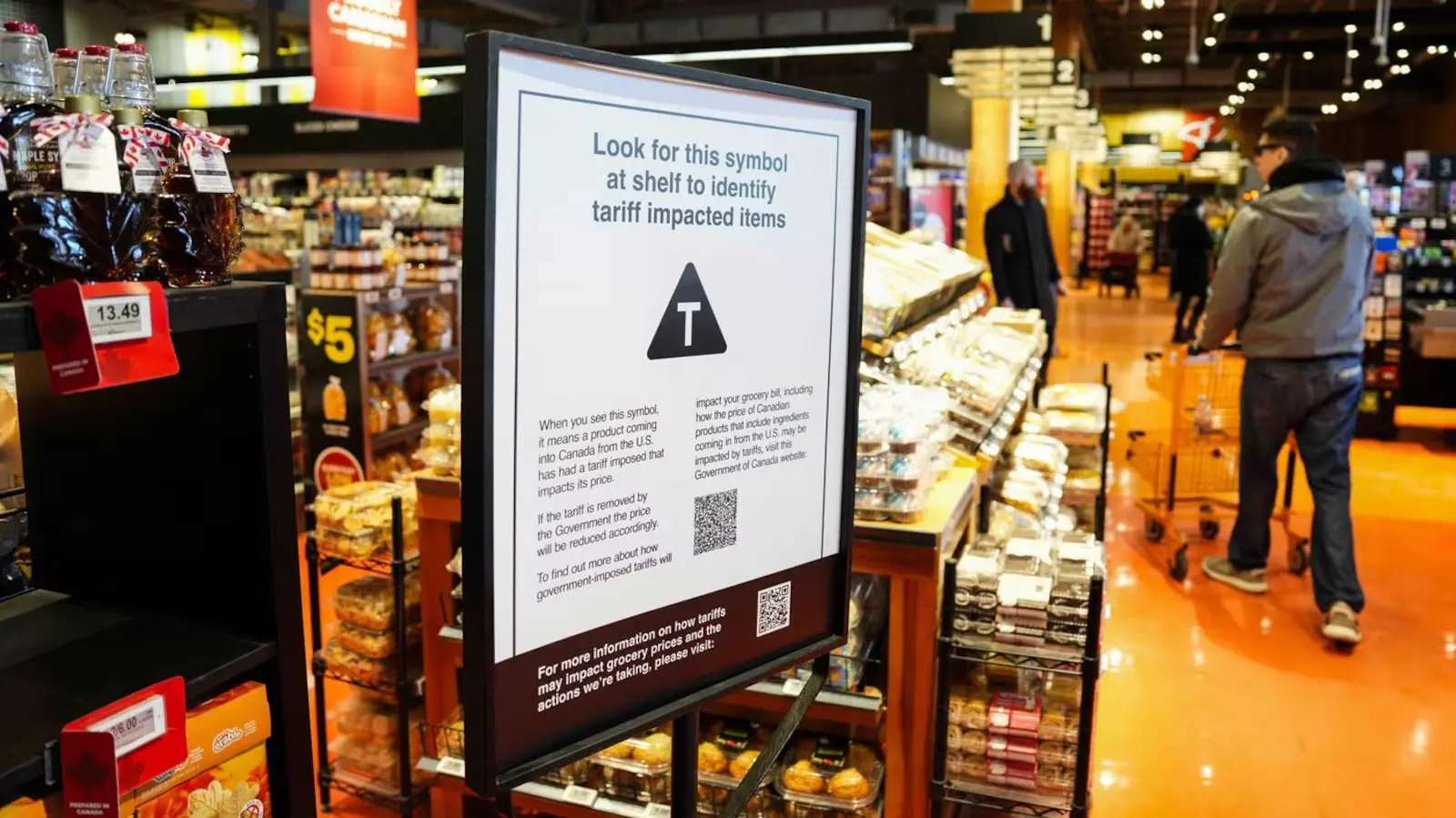Latest News
- Four years after Indigenous woman dies in Niagara Hospital, family still waiting for coroner's investigation
- Lawyer: British Columbia RCMP officer should be fired or resign immediately
- B.C. government looks to offer loan guarantees to property owners in Cowichan Aboriginal title area
- Uber driver's account in Toronto suddenly deactivated; only source of income cut off after 'duplicate account' claim
- TDSB education chief fired by provincial supervisor; sweeping changes at Canada's largest education board
Latest Ads
-
Jasmine Jewel
Call
-
Omidan group
Call
-
Amir Madanpour
Call
-
Dimo studio
Call
-
Yorkacademy
Call
-
Maryambagheri
Call
-
Shishlix Restaurant
Call

Loblaw warns of surge in tariff-hit food products as pre-tariff inventory runs out
An Ottawa grocery store posted a sign on Wednesday, April 2, 2025, announcing that U.S. imports subject to tariffs will be marked with a special symbol on shelves and a QR code that links to a Canadian government website.
(Photo by Justin Tong/Canadian Press)
Loblaw Cos. Ltd. CEO Per Bank said the number of products subject to tariffs in grocery stores will soon increase dramatically as stocks of goods imported before the tariffs are depleted, meaning some items will also go up in price.
Loblaw has been clearly marking products subject to tariffs in its stores in recent months. So far, the number has been just over 1,000 items, but Perbank said in a LinkedIn post on Wednesday that number will grow to over 3,000 in the next week or two, and could potentially exceed 6,000 in the next two months.
“While the tariff situation between the U.S. and other countries is improving, that is not the case in Canada right now,” he wrote. “In fact, we will be facing a huge wave of tariff-related price increases in the coming weeks.”
While the items subject to tariffs will still represent a small portion of the company’s roughly 80,000 items in its stores, customers will feel the price changes in categories like natural foods, pantry items, and health and beauty products.
“Fortunately, we are seeing Prime Minister Mark Carney and other leaders in discussions with U.S. officials, and we all hope that this situation will subside soon,” Perbank said.
He also said he was pleased that the Canadian federal government had revised its anti-tariff policy and limited additional tariffs to prepared foods imported from the United States.
In mid-April, the Canadian government announced several changes to ease the pressure of $60 billion in retaliatory tariffs imposed in March.
One of the most significant changes for grocery stores was a six-month suspension of anti-tariff tariffs on a wide range of U.S. goods used in the production, processing and packaging of food and beverages in Canada. This means that a Canadian company can import milk if it is going to use it in another product, but milk imported for direct sale in stores will still be subject to tariffs.
From the beginning, items such as fresh vegetables imported from the United States, on which the Canadian market is highly dependent (such as lettuce), were exempt from these tariffs.
“Labella’s direct approach to communicating tariff increases could reduce the level of customer dissatisfaction in stores that are already seeing the effects of tariffs,” said Jenna Jacobson, a professor and Eaton Chair in Retail at Metropolitan University of Toronto. “It takes the blame off the store and puts it on foreign policy and politics.”
“Labella has been very proactive in this area, specifically talking about the impact of tariffs, while other stores have been more focused on promoting Canadian-made products,” she added.
However, Jacobson cautioned that maintaining customer trust in a changing tariff landscape is not easy.
“This is essentially an attempt to simplify a very complex issue,” she said. “And this simplification needs to be done very carefully, otherwise it will create false perceptions among consumers.”
Although the Canadian government has granted several exemptions to the reciprocal tariffs in recent weeks, tariffs remain in place on sensitive and high-consumption items such as orange juice and alcoholic beverages, as well as some other products such as raw pasta and canned guinea fowl.
This report was first published by the Canadian Press on May 14, 2025.
Source
Suggested Content
Latest Blog
Login first to rate.
Express your opinion
Login first to submit a comment.
No comments yet.


































